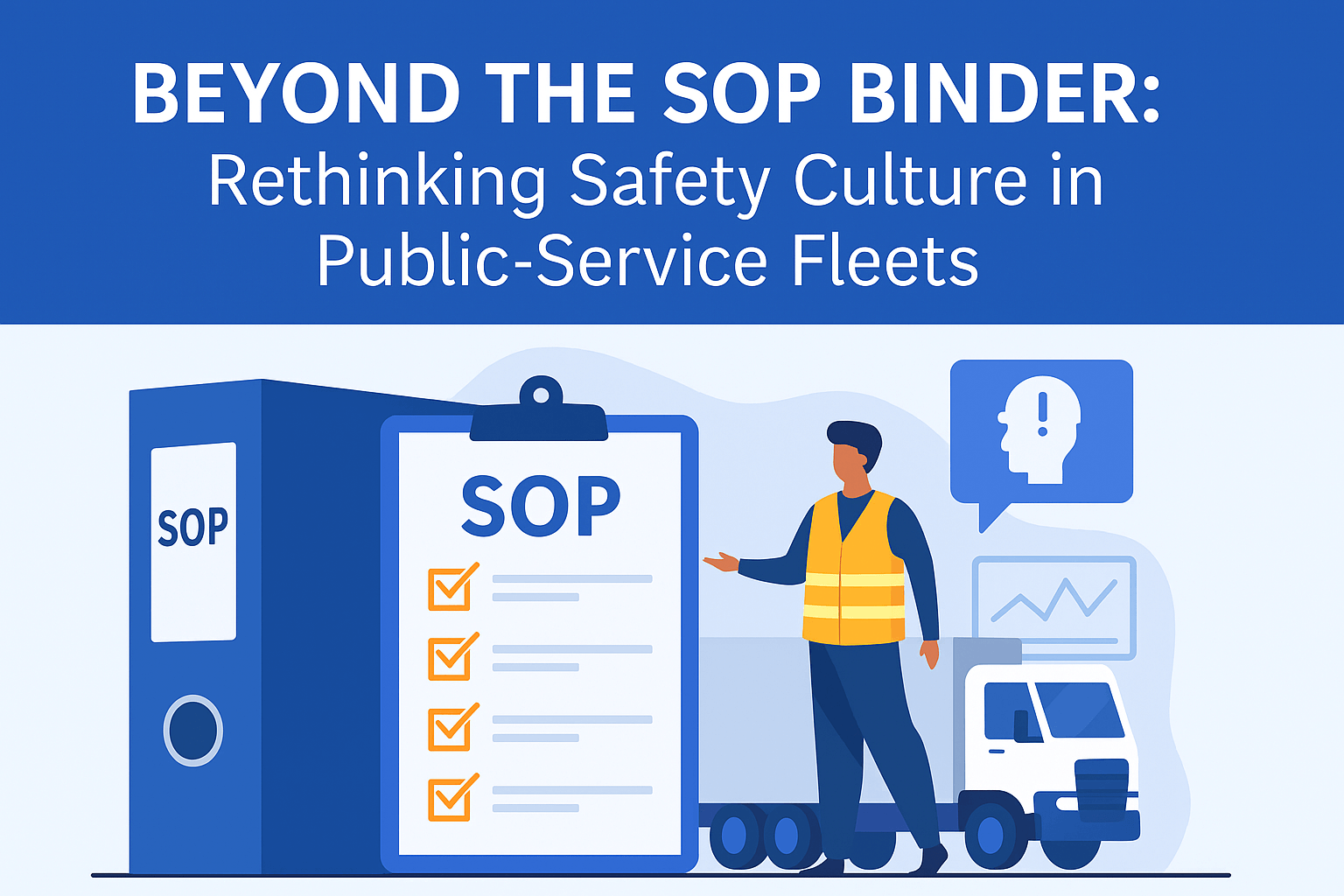
Truck driver fatigue significantly increases the risk of accidents on the road. This article will explore what causes driver fatigue, its impact on safety, and practical tips to manage it.
Table Of Contents
Key Takeaways
- Truck driver fatigue poses significant safety risks, contributing to up to 40% of trucking accidents and impairing cognitive functions and reaction times.
- Effective fatigue management strategies, including prioritizing sleep, maintaining a healthy diet, and taking regular breaks, are crucial for enhancing driver alertness and road safety.
- Regulatory compliance, such as adhering to Hours of Service rules and utilizing Electronic Logging Devices, is essential for preventing driver fatigue and ensuring safe trucking operations.
Understanding Truck Driver Fatigue

Truck driver fatigue is a pervasive issue that significantly impacts the safety and performance of truck drivers. It is a form of driver inattention that can lead to severe consequences, including accidents and fatalities. The trucking industry faces a major safety concern as fatigued drivers are more likely to make critical errors, putting themselves and others at risk.
Managing fatigue helps drivers stay awake and drive safely, especially with the long hours and challenging road conditions they face daily.
Causes of Fatigue in Truck Drivers
Several factors contribute to fatigue, with a lack of sleep being one of the most significant. Truck drivers often struggle to get adequate sleep due to irregular schedules, long work hours, and the demanding nature of their jobs. Poor-quality sleep further exacerbates the problem, leaving drivers feeling drowsy and less alert behind the wheel. Inadequate sleep is the most effective way to combat fatigue, yet many drivers find it challenging to achieve consistently.
Long work hours, shift work, and job-related stress are additional contributing factors to driver fatigue. The nature of the industry often requires drivers to spend extended periods on the road, leading to prolonged periods of wakefulness and increased fatigue.
Studies have shown that up to 30% of trucking accidents are attributed to driver fatigue, highlighting the severe impact of this issue on safety. Alarmingly, 18% of surveyed truck drivers have reported falling asleep at the wheel, underscoring the prevalence of fatigue among commercial vehicle operators.
Effects of Fatigue on Driver Performance
Fatigue has a profound impact on a truck driver’s performance, significantly impairing cognitive functions and decision-making abilities. Fatigued drivers are more prone to making critical errors that can lead to accidents. The drowsiness experienced by those drivers slows their reaction times and impairs their judgment, making it difficult to respond to changing road conditions quickly and effectively. This level of impairment is comparable to the effects of alcohol consumption, highlighting the serious risks associated with driving while fatigued.
Moreover, fatigued truck drivers are 14 times more likely to experience microsleeps while driving compared to their alert counterparts. Microsleeps are brief episodes of sleep that can last a few seconds, during which drivers are completely unaware of their surroundings.
These lapses in attention can have catastrophic consequences, especially when driving a large truck at high speeds. Drivers must be well-rested and alert to maintain road safety and prevent fatal crashes.
The Impact on Safety

The impact of fatigue by truck drivers cannot be overstated. Fatigue is a major safety concern, leading to a higher incidence of truck accidents and fatal crashes. Fatigued drivers are more likely to make poor decisions, misjudge distances, and react slowly to unexpected situations. This significantly increases the risk of severe injuries or fatalities on the road.
Raising awareness about the dangers of fatigue and implementing effective management strategies are key steps towards improving safety in the trucking industry.
Statistics on Truck Accidents Due to Fatigue
Statistics on truck accidents due to fatigue paint a concerning picture. In 2022 alone, truck accidents involving large trucks resulted in 5,837 fatalities, with a notable percentage linked to driver fatigue. Studies indicate that fatigue may contribute to approximately 13% to 40% of all trucking accidents, underscoring the critical need for effective fatigue management practices. Over 100,000 fatigue-related truck accidents occur annually in the United States, highlighting the widespread impact of this issue on road safety.
Technologies that monitor driving patterns can significantly help in identifying and addressing fatigue. These fatigue detection tools can monitor driver alertness and provide real-time alerts when signs of fatigue are detected. Actively monitoring drivers and alerting them to potential fatigue symptoms helps prevent accidents and enhances overall road safety.
Case Studies of Fatigue-Related Accidents
Real-world case studies of fatigue-related accidents illustrate the devastating impact of driver fatigue. The cognitive impairment caused by fatigue can lead to risky driving behaviors, such as poor decision-making and misjudgment of distances and speeds. These impairments significantly increase the likelihood of accidents, often resulting in fatal crashes.
These case studies highlight the importance of addressing fatigue through effective management strategies to reduce accident risk and improve road safety.
Regulations and Compliance
Regulations and compliance play a crucial role in mitigating truck driver fatigue and enhancing road safety. Federal regulations, such as the Hours of Service (HOS) rules, are designed to restrict driving hours and mandate rest periods for drivers. These regulations aim to prevent fatigue by ensuring that drivers have adequate rest and do not exceed safe driving limits.
Motor carriers are prohibited from allowing sick or fatigued drivers to continue operating, further emphasizing the importance of compliance in promoting safety.
Hours of Service Rules
The Hours of Service (HOS) regulations are a critical component of federal motor carrier safety efforts. For property-carrying CDL drivers, the HOS rules allow for a work period of 14 consecutive hours, including a mandatory break after 8 hours of driving. Drivers can drive for a maximum of 11 hours in a 14-hour workday. They are also required to take 10 consecutive hours off from duty.
These regulations mitigate fatigue and ensure drivers have sufficient rest to drive safely. Electronic Logging Devices (ELDs) are often used to accurately record driving hours and ensure compliance with HOS regulations.
Electronic Logging Devices
Electronic Logging Devices (ELDs) are key tools in combating fatigue. These devices record driving hours for truck drivers, facilitating real-time tracking to ensure adherence to safety regulations. By monitoring driving time, ELDs help enforce compliance with Hours of Service (HOS) rules, which are crucial for preventing fatigue.
Ultimately, ELDs promote proper rest and driving schedules, reducing the risk of fatigue-related accidents and enhancing road safety.
Strategies for Reducing Truck Driver Fatigue

Practical strategies to reduce truck driver fatigue are vital for ensuring road safety. These strategies include:
- Prioritizing adequate sleep
- Maintaining a healthy diet
- Taking regular breaks
- Avoiding medications that induce drowsiness
Adopting these practices helps truck drivers stay alert and drive safely, reducing the risk of fatigue-related accidents.
Fleet managers play a crucial role in supporting drivers by fostering a safer work environment and implementing effective fatigue management policies.
Prioritize Adequate Sleep
Sleep is vital for truck drivers to maintain alertness and ensure road safety. Truck drivers should aim for 7-9 hours of enough sleep to avoid fatigue and stay awake during long hours of driving. Creating an optimal sleep environment in the truck cab, including ensuring darkness, minimizing distractions, and using adequate bedding, can significantly improve sleep quality.
Short naps, ideally lasting up to 45 minutes, can enhance alertness and performance, helping drivers stay awake and drive safely.
Maintain a Healthy Diet
A healthy diet helps truck drivers sustain energy levels and prevent fatigue. Regularly eating balanced meals rich in protein, carbohydrates, and healthy fats can help drivers stay alert and perform at their best. Avoiding excessive caffeine and sugary foods is also important, as these can lead to energy crashes and decreased alertness.
Proper nutrition helps truck drivers maintain steady energy levels and stay alert on the road.
Take Regular Breaks
Regular rest breaks during long driving periods are crucial for reducing fatigue. These breaks provide an opportunity for drivers to get fresh air, stretch, and relieve tension from prolonged sitting. Regular breaks help maintain alertness and prevent the adverse effects of extended work hours.
When feeling tired, drivers should prioritize taking breaks, getting out of the vehicle, and moving around to stay alert and drive safely. Incorporating regular breaks into driving schedules is an effective strategy for mitigating fatigue and enhancing overall driver performance.
Avoid Medication That Induces Drowsiness
Truck drivers should be cautious about using medications that can induce drowsiness, such as cold medicine, allergy relief, and sleeping pills. These medications can significantly impair driving performance and increase the risk of accidents. It’s important for drivers to avoid medications that cause drowsiness while on duty to ensure their alertness and ability to drive safely.
Being mindful of potential medication side effects helps truck drivers reduce drowsiness and maintain optimal performance behind the wheel.
Role of Fleet Managers in Preventing Fatigue

Fleet managers are vital in supporting truck drivers and preventing fatigue. Fostering a better work environment and implementing policies that prioritize rest and wellness can significantly reduce driver fatigue.
Promoting healthy sleep habits, providing adequate scheduling and rest opportunities, and utilizing online training programs that integrate modern technologies are key strategies for mitigating fatigue. These efforts enhance driver performance and ensure safer roads for everyone.
Implement Fatigue Management Programs
Well-structured fatigue management programs are crucial for enhancing safety and reducing the risk of fatigue-related incidents. These programs identify fatigue-related hazards and educate drivers on recognizing and addressing fatigue.
Telematics and AI technologies analyze driver behavior and offer personalized training solutions to mitigate fatigue. Tailoring training programs based on actual driver behavior and performance data helps fleet managers address the unique needs of individual drivers and promote safer driving practices.
Promote Safe Scheduling Practices
Safe scheduling practices are essential for reducing fatigue and ensuring compliance with federal motor carrier safety regulations. Effective scheduling must comply with legal limits to provide drivers with sufficient rest periods and avoid extended work hours. Allowing ample travel time and incorporating necessary breaks ensures that drivers remain alert and safe on the road.
Safe scheduling practices mitigate fatigue, enhance driver performance, and contribute to overall road safety.
Use Fatigue Detection Technologies
Fatigue detection technologies are vital tools in preventing accidents associated with driver fatigue. These technologies monitor driver alertness, detecting signs of fatigue and providing real-time alerts to prevent potential incidents.
Leveraging these advanced systems helps fleet managers address driver fatigue and enhance overall safety. Early detection of fatigue and proactive measures can significantly reduce the risk of accidents and improve truck drivers’ well-being.
Improv Learning’s Solutions for Truck Driver Fatigue

Improv Learning offers innovative solutions to combat truck driver fatigue through engaging and effective training programs. Incorporating interactive methods and modern technologies, Improv Learning’s online fleet training program enhances drivers’ awareness of fatigue management and promotes safer driving practices.
These solutions are designed to address the unique challenges faced by truck drivers and provide practical tools to reduce fatigue and improve overall driver’s performance.
SPIDER Defensive Driving Program
The SPIDER Defensive Driving program is a key part of Improv Learning’s solutions for reducing driver fatigue. This program trains drivers to develop anticipatory skills to detect and avoid potential hazards on the road. The SPIDER method focuses on fostering a proactive mindset, allowing drivers to recognize dangers before they escalate.
Enhancing drivers’ ability to anticipate and react to potential risks, the SPIDER program significantly improves safety and reduces the likelihood of accidents.
Recall Boost Training
Recall Boost Training is another innovative approach by Improv Learning to combat truck driver fatigue. This training employs spaced repetition techniques to enhance drivers’ retention of critical safety information. Spacing information in small bites over time, Recall Boost Training helps drivers retain vital safety protocols and improve recall during critical situations.
This method addresses adult learners’ short attention spans and ensures drivers remain informed and vigilant on the road.
Customized Training Using Telematics and AI
Improv Learning’s use of telematics and AI for customized training represents a cutting-edge approach to driver education. Analyzing real data on driver behavior, these technologies provide insights that inform targeted training adjustments. This tailored approach ensures that the specific needs of individual drivers are met effectively, improving their performance and enhancing overall road safety.
Customized training based on telematics and AI addresses the unique challenges faced by truck drivers, promoting safer driving practices and reducing the risk of fatigue-related incidents.
Summary
In summary, truck driver fatigue is a critical issue that significantly impacts the safety and performance of drivers in the trucking industry. Understanding the causes and effects of fatigue, implementing effective regulations and compliance measures, and adopting practical strategies to reduce fatigue are essential steps towards creating safer roads. Fleet managers play a crucial role in supporting drivers and promoting a safer work environment. Improv Learning’s innovative training programs offer valuable solutions to combat driver fatigue, enhance driver performance, and ensure overall road safety. By addressing fatigue through comprehensive fatigue management practices, we can make a meaningful difference in the lives of truck drivers and everyone who shares the road with them.







